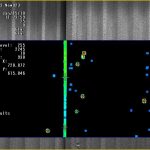
Defect inspection systems on continuous products, wires, pipes and cables are an important part of any production line.
Quality control is crucial in these industries and using the correct systems ensures product safety and reliability.
Vision systems, laser micrometers, and optical inspection tools are three common tools used to inspect for defects.
Vision systems use cameras to capture images of objects and analyze them for imperfections or defects. The cameras can detect defects such as scratches, breaks, cracks, bends, misalignments, etc.
Read more: Systems for checking defects on continuous products, wires, pipes and cablesIt is a non-destructive process that helps identify parts with potential defects without damaging them. Vision systems are also useful for measuring features such as length and surface area.
Laser micrometers use light waves from lasers to measure the diameter of wires or pipes accurately and quickly. It is ideal for production lines where large quantities of identical components need to be inspected for any discrepancies in size or shape.
The device can also determine whether or not a product has passed an inspection by interpreting data captured by laser light waves against the standards set by the manufacturer.
Optical inspection instruments are used to observe objects on a microscopic level due to their ability to display magnified images with precision.
These tools have high resolution levels that allow operators to get a detailed overview of the individual components of a product without causing damage or disruption during analysis.
Optical inspection tools can be used to examine the surface texture abnormalities and the size of the holes inside the products with great precision.
All three technologies offer advantages over traditional methods when it comes to inspect continuous products such as wires and tubes. Traditional methods offer only minimal accuracy due to their inability to measure exact dimensions or detect subtle imperfections that could potentially lead to lineside safety issues if they go undetected on production lines that employ manual inspection processes.
The use of vision systems, laser micrometers and optical inspection tools allows manufacturers to effectively and quickly evaluate their productswhile reducing costs associated with manual inspection processes or rework of defective products that go undetected in traditional pre-market inspection processes, where customer satisfaction may be compromised, resulting in additional long-term costs related to repairs or recalls, which affect profits in the long run.
Thanks to these technologies, quality control teams can quickly identify problems in production lines, allowing greater flexibility to make improvements to design parameters in line with customer expectations.
Systems for the inspection of defects on continuous products, wires, pipes and cables have become an integral part of many industrial processes.
Vision systems are a type of technology often used to detect defects in these products. These systems use high resolution cameras and are able to detect the physical deviations from the required product standard.
A vision system is able to detect even very small defects, including those that may be invisible to the naked eye. Additionally, they can be used to inspect surface finish parameters such as roughness or gloss.
Laser micrometers are another type of inspection tool used for flaw detection on continuous products, wires, tubes and cables. Laser micrometers use the laser to measure the diameter of a product in three sections.
This allows you to make very accurate measurements quickly and precisely. Laser micrometers can also be used for dimensional analysis and quality control in industries such as automotive manufacturing or medical device manufacturing.
Optical inspection instruments are another type of technology often used for flaw detection on continuous products, wires, pipes and cables. Optical inspection tools use light sources such as LEDs combined with optical lenses or cameras to detect physical defects in products at very high speeds and with great accuracy.
Optical inspection tools allow you to quickly examine large batches of samples without having to manually inspect each individual item. They are commonly used in industries ranging from electronics manufacturing to aerospace engineering applications.
Finally, there is theautomatic image processing, which is usually implemented using computer algorithms that allow a vision system or optical inspection tool to make decisions based on captured images or data points.
Automated image processing allows a vision system or optical inspection tool to perform tasks such asobject identification or pattern recognition with greater accuracy than could be achieved by manual means alone.
This technology is especially useful in applications where product moves at high speed and needs to be inspected quickly, while maintaining levels of accuracy that meet industry standards and regulations.
Copyright by RODER SRL - All rights reserved - Application note AN0075

